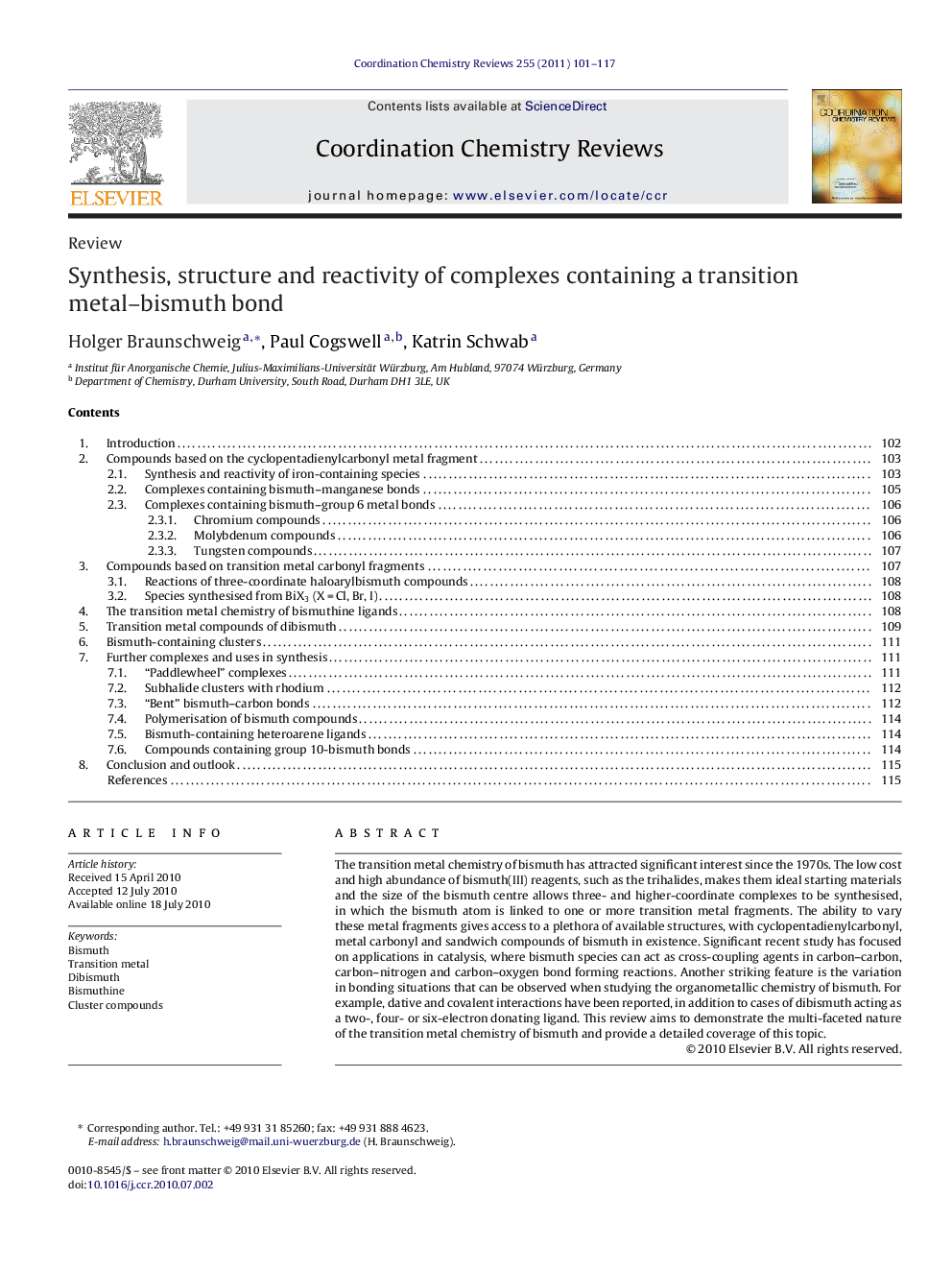| کد مقاله | کد نشریه | سال انتشار | مقاله انگلیسی | نسخه تمام متن |
|---|---|---|---|---|
| 1301130 | 1498787 | 2011 | 17 صفحه PDF | دانلود رایگان |

The transition metal chemistry of bismuth has attracted significant interest since the 1970s. The low cost and high abundance of bismuth(III) reagents, such as the trihalides, makes them ideal starting materials and the size of the bismuth centre allows three- and higher-coordinate complexes to be synthesised, in which the bismuth atom is linked to one or more transition metal fragments. The ability to vary these metal fragments gives access to a plethora of available structures, with cyclopentadienylcarbonyl, metal carbonyl and sandwich compounds of bismuth in existence. Significant recent study has focused on applications in catalysis, where bismuth species can act as cross-coupling agents in carbon–carbon, carbon–nitrogen and carbon–oxygen bond forming reactions. Another striking feature is the variation in bonding situations that can be observed when studying the organometallic chemistry of bismuth. For example, dative and covalent interactions have been reported, in addition to cases of dibismuth acting as a two-, four- or six-electron donating ligand. This review aims to demonstrate the multi-faceted nature of the transition metal chemistry of bismuth and provide a detailed coverage of this topic.
Journal: Coordination Chemistry Reviews - Volume 255, Issues 1–2, January 2011, Pages 101–117